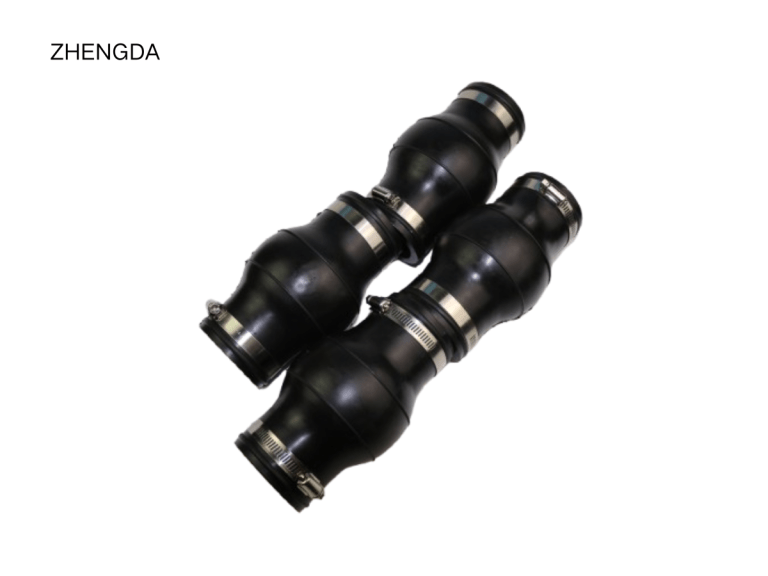

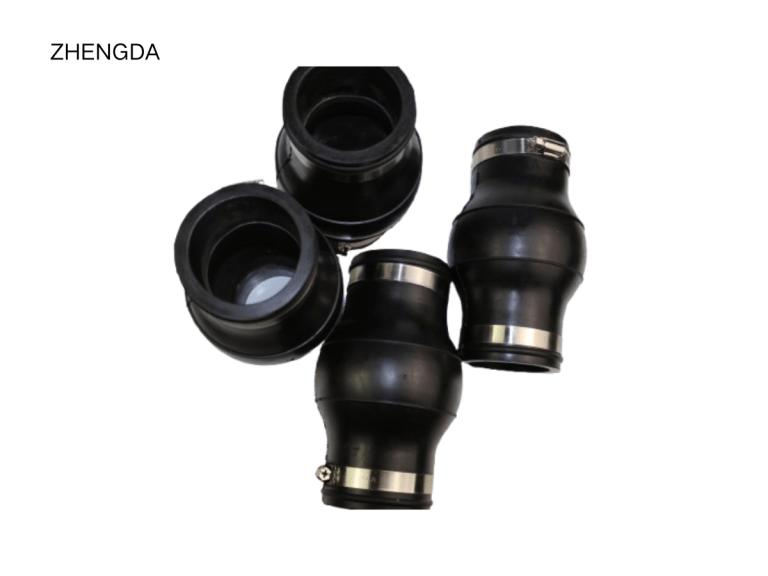
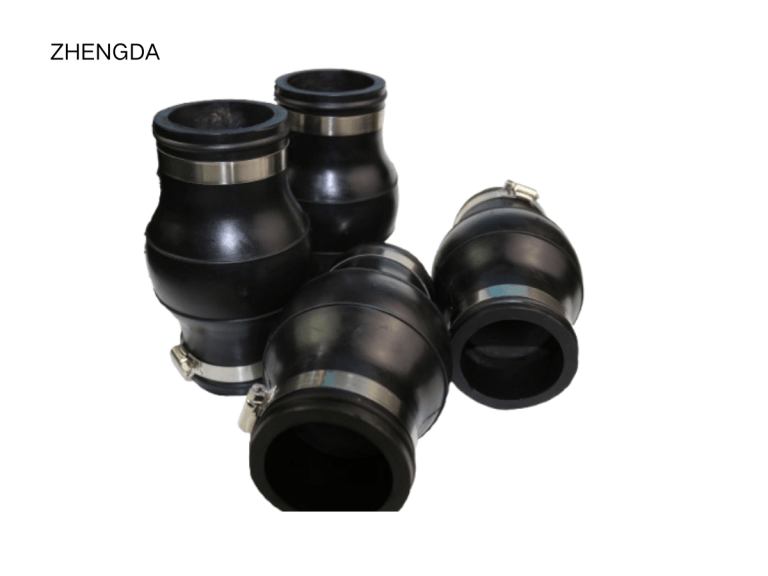
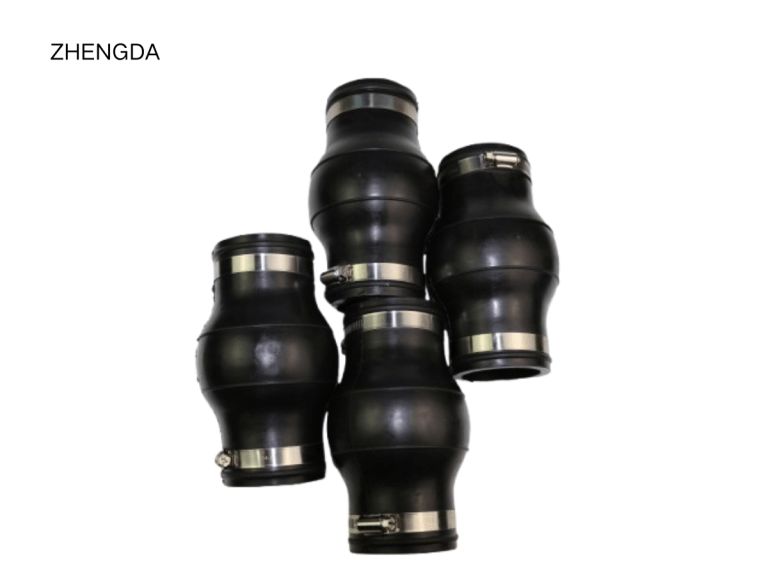
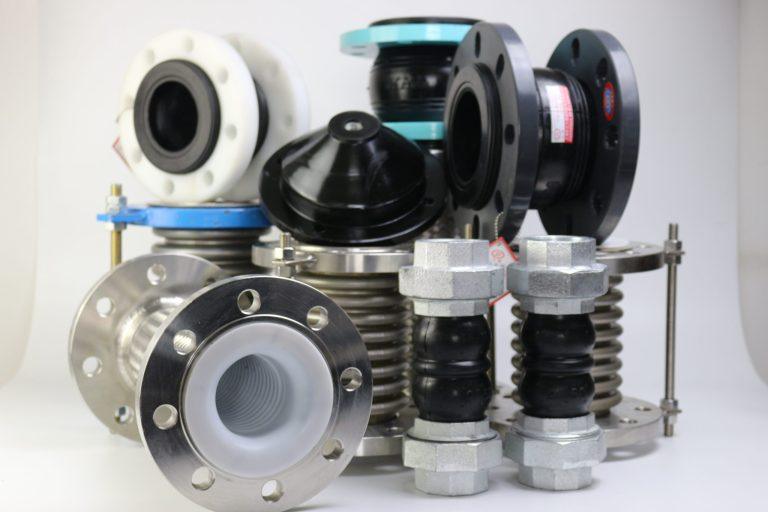
Clamp Type Rubber Joint
Key Features of Clamp Type Rubber Joint
Technical Specifications for Clamp Type Rubber Joint
| Nominal Diameter (DN) | Inch | Length (L) mm | Clamp Thickness (mm) | Axial Extension (mm) | Lateral Displacement (mm) | Angular Deflection (°) |
|---|
| DN32 | 1.25″ | 95 | 16 | 6 | 9 | 9 |
| DN40 | 1.5″ | 95 | 18 | 6 | 10 | 9 |
| DN50 | 2″ | 105 | 18 | 7 | 10 | 10 |
| DN65 | 2.5″ | 115 | 20 | 7 | 13 | 11 |
| DN80 | 3″ | 135 | 20 | 8 | 15 | 12 |
| DN100 | 4″ | 150 | 22 | 10 | 19 | 13 |
| DN125 | 5″ | 165 | 24 | 12 | 19 | 13 |
| DN150 | 6″ | 180 | 24 | 12 | 20 | 14 |
| DN200 | 8″ | 210 | 24 | 16 | 22 | 14 |
| DN250 | 10″ | 230 | 26 | 16 | 25 | 14 |
| DN300 | 12″ | 245 | 28 | 16 | 25 | 14 |
| DN350 | 14″ | 255 | 28 | 16 | 25 | 14 |
| Project | Unit | Clamp-1 | Clamp-2 | Clamp-3 |
|---|
| Model | – | Clamp-1 | Clamp-2 | Clamp-3 |
| Working Pressure | MPa (kgf/cm²) | 1.0 (10) | 1.6 (16) | 2.5 (25) |
| Burst Pressure | MPa (kgf/cm²) | 2.0 (20) | 3.0 (30) | 4.5 (45) |
| Vacuum Resistance | KPa (mmHg) | 53.3 (400) | 86.7 (650) | 100 (750) |
| Operating Temperature | °C | -15 ~ 115°C (Special: -30 ~ 250°C) | -15 ~ 115°C (Special: -30 ~ 250°C) | -15 ~ 115°C (Special: -30 ~ 250°C) |
| Applicable Media | – | Air, Compressed Air, Water, Seawater, Hot Water, Oil, Acid, Alkali, etc. | Air, Compressed Air, Water, Seawater, Hot Water, Oil, Acid, Alkali, etc. | Air, Compressed Air, Water, Seawater, Hot Water, Oil, Acid, Alkali, etc. |
| Material | Temperature Range (°C) | Oil Resistance | Acid & Alkali Resistance | Elasticity | Abrasion Resistance | Typical Applications |
|---|
| EPDM | -40 ~ 120 | Poor | Excellent | Excellent | Medium | Water, Steam, Air |
| NR (Natural Rubber) | -30 ~ 80 | Poor | Medium | Excellent | Excellent | Industrial Water, Air |
| NBR | -20 ~ 100 | Excellent | Medium | Good | Good | Oil, Lubrication Systems |
| Neoprene | -35 ~ 100 | Good | Good | Medium | Good | Seawater, Mild Chemicals |
| Silicone | -60 ~ 200 | Poor | Poor | Good | Low | Food Grade, Medical |
| FKM (Viton) | -20 ~ 250 | Excellent | Excellent | Medium | Excellent | Chemical, High Temp Oil |
| Butyl (IIR) | -40 ~ 120 | Poor | Good | Excellent | Medium | Gas, Acidic Gases |
Preparation:
Inspect the clamp rubber joints and pipeline ends to ensure surfaces are clean, smooth, and free of dirt or damage.Alignment:
Align the joint accurately between pipe ends, ensuring proper distance according to specified lengths in the technical datasheet.Installation:
Position the clamp evenly around the rubber joint. Tighten clamps gradually and symmetrically to ensure even pressure distribution and effective sealing.Bolt Tightening:
Do not overtighten the clamps. Follow the recommended torque values specified by the clamp manufacturer to prevent deformation or damage to the rubber joint.Inspection and Testing:
After installation, visually inspect to confirm proper fit and alignment. Conduct a pressure test to ensure no leakage.
Regular Inspection:
Periodically inspect the joint for signs of wear, cracking, distortion, or corrosion of clamps.Tightness Check:
Ensure clamps remain properly tightened according to recommended torque settings. Re-tighten clamps if necessary, but avoid excessive force.Replacement:
Replace immediately if signs of severe deterioration or leaks appear, or if the joint has reached the end of its recommended service life.Environmental Factors:
Ensure rubber joints are shielded from prolonged exposure to extreme heat, UV rays, chemicals, or sharp objects to maximize service life.Cleaning:
Regularly clean the rubber surface and clamps with mild detergent and water to avoid chemical build-up, preventing premature aging and corrosion.
Why Choose Our Rubber Expansion Joints
Need a Quote or Have Questions?
We’re here to help with product details, pricing, or technical support. Contact us now to get the information you need.


